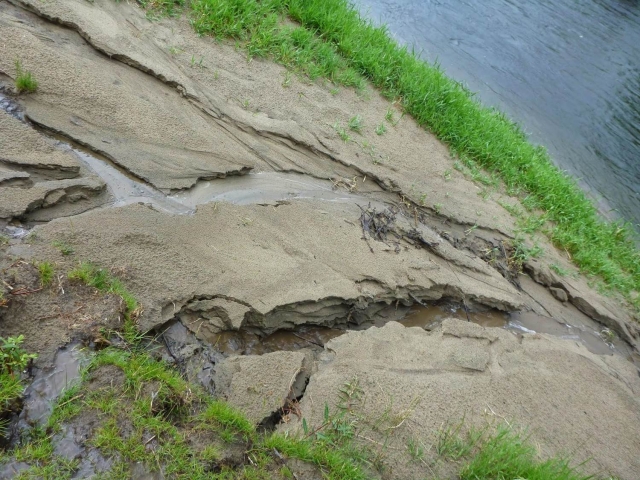KETTLE RIVER Q&A – What did we learn about issues on the water’s edge?
On April 15, nearly 40 residents of the Boundary came together in Grand Forks to learn and share ideas about issues at the water’s edge – floodplains, riparian areas, and wetlands.
The Regional District of Kootenay Boundary (RDKB) held the meeting to gather input on key issues in the Kettle River Watershed Management Plan before the plan is finalized.
I gave a presentation with photos showing the good, the bad and the ugly. We also learned from Jenny Coleshill of the Granby Wilderness Society about the importance of riparian areas and her current work to assess how people are impacting them.
Participant Donna Seminoff asked a question that bears repeating: “Can you break it down for everyone – what happens when people cut trees and shrubs on the shoreline?”
The long answer depends on the site, the soils, and the stream or lake setting. But here’s the short of it:
“Trees, shrubs and native plants have large root systems that buffer moving water during floods. When we remove them and replace them with non-native grass, which has much shallower roots, high waters can easily undermine banks and cause them to slump, and water running over the surface can carve into the banks. The added sand, gravel and stones in turn provide even more material and energy to the river, leading it to spread out further downstream.”
Participants worked in groups on four main topics: limiting risks from flooding and erosion; improving riparian areas near development; controlling impacts of resource roads on stream health; and encouraging agricultural protection and conservation of streams and wetlands.
Mark Andison, RDKB General Manager of Operations, noted that the public raised a broad range of potential solutions, “everything from re-establishing the Granby Dam, to dredging gravel, to giving out trees and shrubs for shoreline property owners.”
Some of the other suggestions included implementing ecosystem-based stewardship in resource management areas, building skills and providing a ‘toolkit’ for grassroots monitoring and stewardship, developing incentives and land-use control rules for developing near water, and regulation and pricing that makes resource users and polluters pay more of the costs of regulation and impacts on other users.
I spoke with Doug Fossen from the Kettle River Stockmen’s Association after the event for his perspective. Fossen said that much work is being done on improving both private lands and range management areas, and that funding is available for many projects – “working with the Environmental Farm Plan you can access funding for off-site watering, riparian fencing, irrigation improvements or other projects.”
We are following up on the meeting with a discussion paper that works through the issues and solutions and outlines concrete, practical actions to reduce risks and improve environmental conditions.
Thank you to the RDKB for hosting the event and all of the participants for their involvement.
– Graham Watt is the coordinator of the Kettle River Watershed Management Plan for the RDKB, and is working with a Stakeholder Advisory Group from across the region to develop the plan. Email plan@kettleriver.ca






















